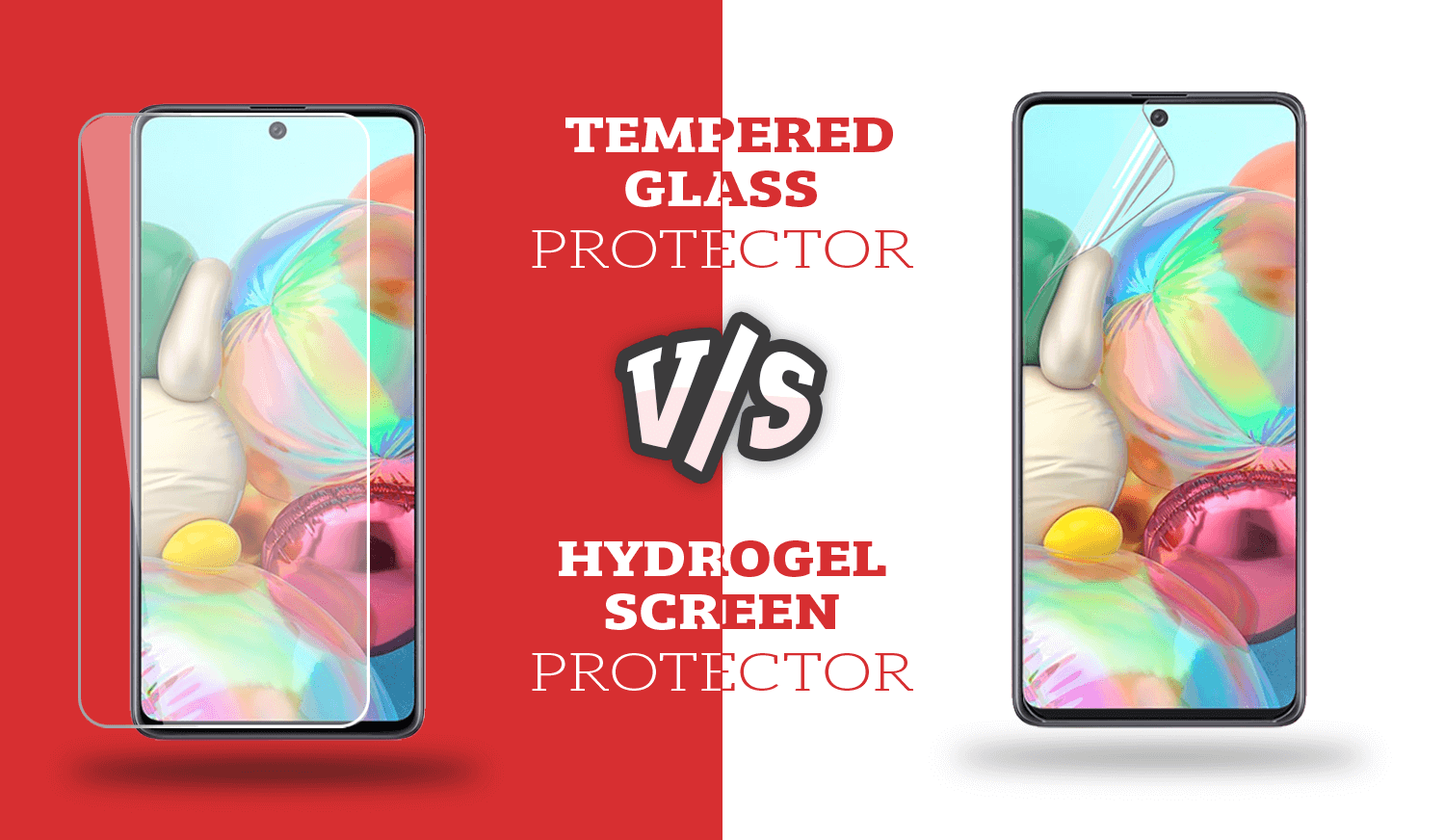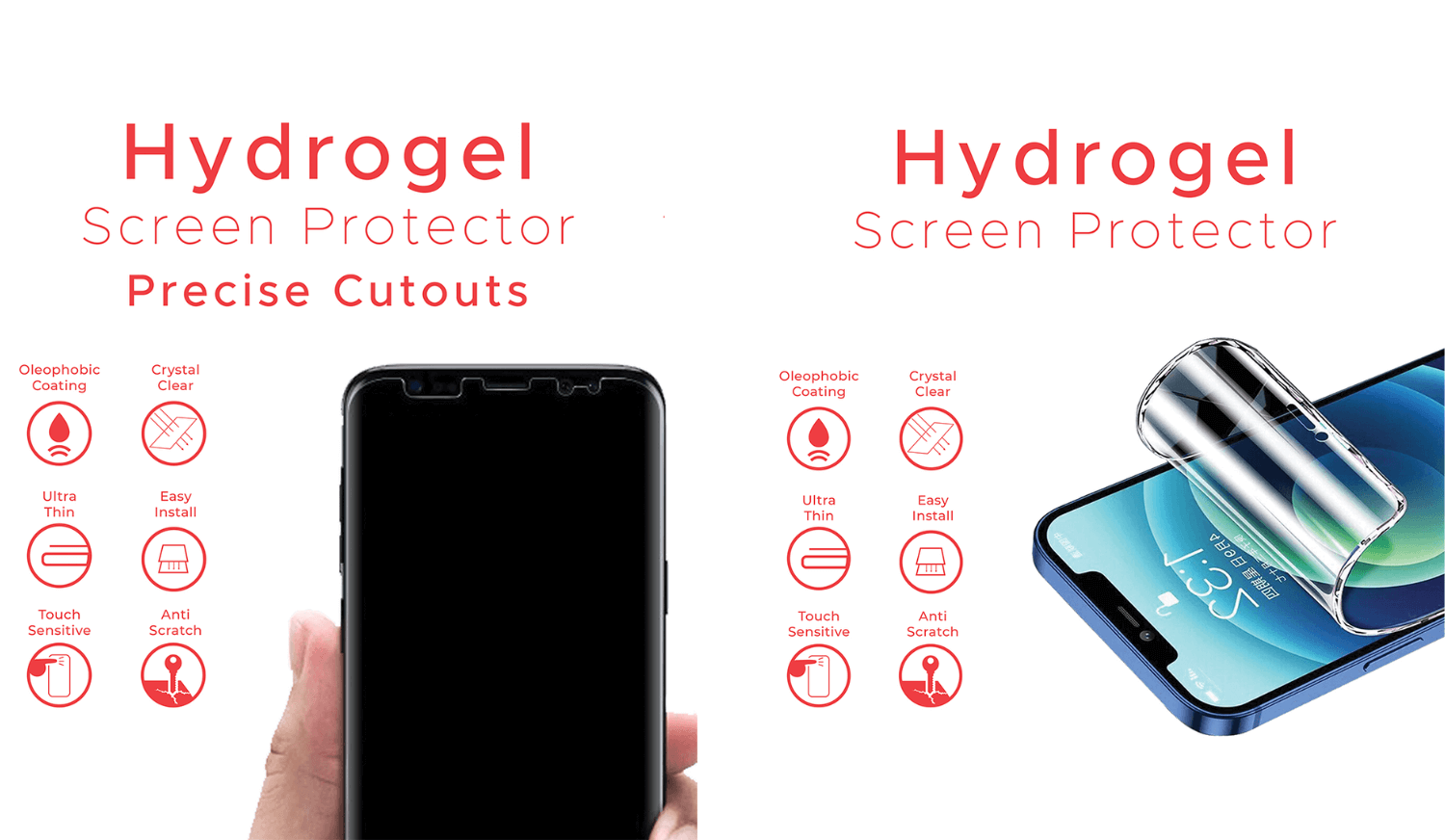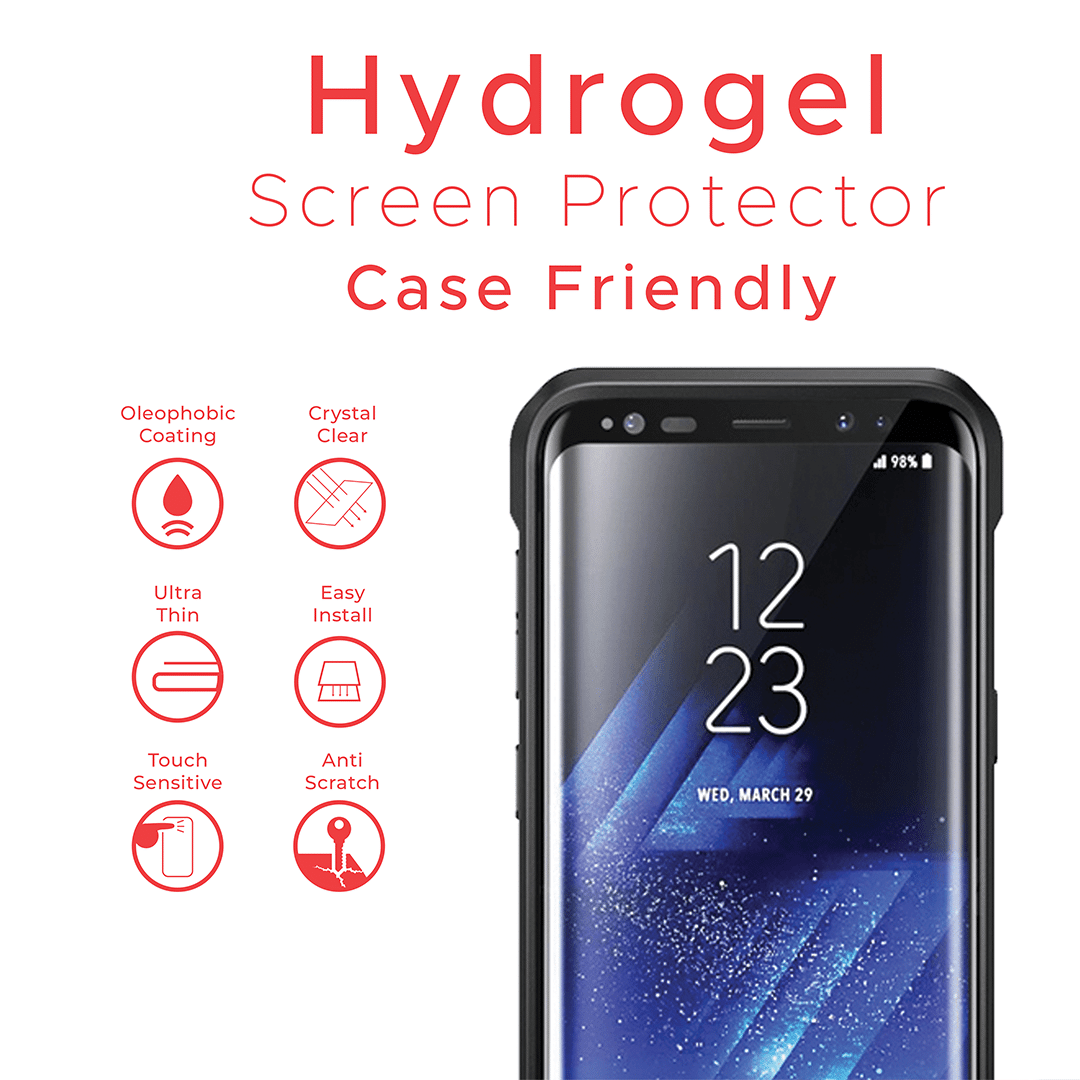When it comes to protecting our valuable smartphones and other electronic devices, screen protectors are a must-have accessory. However, with the wide variety available, choosing the right one can be overwhelming. Two popular options that often leave users in a dilemma are hydrogel and tempered glass screen protectors. In this article, we will conduct a comprehensive comparison on hydrogel vs tempered glass explore the differences, advantages, and disadvantages of both options to help you make an informed decision about which one is the best fit for your needs.
What is Hydrogel Screen Protector and How Does it Work?
Hydrogel is a type of screen protector that offers excellent protection against scratches and minor impacts. It is made from a soft, flexible material that adheres to the phone screen without leaving any residue or bubbles behind. The hydrogel film provides a clear view of the screen while offering enhanced touch sensitivity.
The adhesive properties of hydrogel allow it to adhere seamlessly to the curved edges of modern smartphones, providing edge-to-edge protection. It acts as a barrier between your phone’s display and external elements such as keys or coins in your pocket or bag. Hydrogel also has self-healing properties which help reduce the appearance of minor scratches over time.
What is Tempered Glass Screen Protector and How Does it Work?
Tempered glass screen protectors are another popular option for protecting your smartphone’s display. Unlike hydrogel, tempered glass is made from multiple layers of specially treated glass that undergoes intense heating followed by rapid cooling processes.
This process creates a strong layer that adheres firmly to the phone screen without compromising touch sensitivity or clarity. Tempered glass offers superior scratch resistance compared to other materials like plastic or hydrogel due to its hardness rating on the Mohs scale.
Hydrogel Screen Protector Vs Tempered Glass: An In-depth Comparison
Hydrogel Screen Protector: The Innovative Screen Protector
Hydrogel screen protectors are a relatively newer innovation designed to provide enhanced protection and a seamless user experience. These protectors are made from a soft, flexible material that is self-healing, meaning it can repair minor scratches on its own. This unique feature ensures your screen protector stays in top condition for a more extended period.
Benefits of Hydrogel Screen Protectors
Self-Healing Properties: The hydrogel’s ability to repair small scratches and blemishes on its surface ensures your screen remains pristine.
Smooth Texture: The soft and smooth texture of hydrogel provides excellent touch sensitivity, making it feel like your device’s original screen.
Full Coverage: Hydrogel screen protectors offer edge-to-edge coverage, protecting the entire screen from potential damage.
Bubble-Free Installation: Due to their flexible nature, hydrogel protectors are easier to install without any unsightly bubbles.
High Transparency: Hydrogel protectors offer high clarity and transparency, ensuring a crystal-clear view of your device’s display.
Tempered Glass: The Classic Choice
Tempered glass screen protectors have been around for longer and have proven their effectiveness in safeguarding screens from scratches, cracks, and impacts. Made from processed glass, these protectors provide robust protection without compromising touch sensitivity.
Advantages of Tempered Glass Screen Protectors
High Durability: Tempered glass is extremely tough and can effectively withstand sharp objects and moderate impacts.
Oleophobic Coating: Most tempered glass protectors come with an oleophobic coating that repels fingerprints and smudges.
Easy Installation: The rigid structure of tempered glass makes it easier to install, resulting in a bubble-free application.
High Touch Sensitivity: The smooth surface of tempered glass provides a natural and responsive touch experience while comparing hydrogel vs tempered glass.
HD Clarity: Tempered glass protectors offer high-definition clarity, ensuring no compromise in the display quality.
Hydrogel Screen Protector vs Tempered Glass: A Head-to-Head Comparison
To help you decide between hydrogel and tempered glass screen protectors, let’s compare them in various essential aspects:
| Aspect | Hydrogel | Tempered Glass |
| Material | Soft, flexible film | Processed Glass |
| Scratch Resistance | Self-healing properties | Highly-scratch resistance |
| Impact Resistance | Moderate | Moderate |
| Ease of Installation | Easier due to flexibility | Slightly trickier |
| Sensitivity to Touch | Excellent | Natural and responsive |
| Clarity and Transparency | High | High |
| Oleophobic Coating | Not common | may vary Common feature |
| Durability | Moderate | Very durable |
Durability Comparison Between Hydrogel Screen Protector and Tempered Glass Screen Protector
When comparing the durability between hydrogel screen protector and tempered glass screen protectors, several factors come into play. Both options are designed to withstand everyday wear and tear but have different levels of resilience.
Hydrogel protectors tend to be more flexible due to their soft material composition. While they offer excellent scratch resistance initially, they may show signs of wear over time with prolonged use or exposure to harsh conditions such as extreme temperatures or excessive moisture.
On the other hand, tempered glass protectors are known for their exceptional durability. They can withstand higher levels of impact without cracking or shattering easily. However, if subjected to extreme force or dropped from a significant height onto a hard surface, even tempered glass may break.
Scratch Resistance Comparison Hydrogel Screen Protector and Tempered Glass Screen Protector
Both hydrogel and tempered glass screen protectors offer good scratch resistance capabilities; however, there are differences in their performance.
Hydrogel protectors have a self-healing property that helps reduce the visibility of minor scratches over time. This means that small scratches caused by everyday use may become less noticeable as the hydrogel film repairs itself.
Tempered glass, on the other hand, provides superior scratch resistance due to its hardness rating on the Mohs scale. It can withstand contact with sharp objects such as keys or coins without leaving any visible marks on the protector itself.
Impact Resistance Comparison Between Hydrogel Screen Protector and Tempered Glass Screen Protector
When it comes to impact resistance, tempered glass screen protectors have an edge over hydrogel protectors. The multiple layers of treated glass in tempered glass make it highly resistant to cracks or shattering upon impact.
Hydrogel protectors, while offering some level of protection against minor impacts, may not be able to withstand more severe situations. They are more prone to denting or tearing if subjected to significant force or dropped from a height onto a hard surface.
Ease of Application Comparison Between Hydrogel Screen Protector and Tempered Glass Screen Protector
The ease of application is an essential factor when choosing a screen protector for your phone. Both hydrogel and tempered glass options come with their own set of considerations in terms of installation.
Hydrogel protectors are typically easier to apply due to their flexible nature. They can conform well to curved screens without leaving any bubbles behind during installation. Some brands even provide installation kits that include alignment tools for precise placement.
Tempered glass protectors require careful alignment during installation as they are rigid and less forgiving when it comes to repositioning once applied. However, many manufacturers now offer installation kits with guide stickers or frames that help ensure accurate placement on your phone’s display.
Cost Comparison Between Hydrogel Screen Protector and Tempered Glass Screen Protector
The cost is often a significant consideration when choosing a phone protection option. Hydrogel screen protectors tend to be more affordable compared to tempered glass options due to the difference in materials used.
While hydrogel protectors offer good protection at a lower price point, they may require more frequent replacement due to wear and tear. Tempered glass protectors, although initially more expensive, tend to last longer and provide better overall value for money.
Hydrogel Screen Protector vs Tempered Glass: Which One Should You Choose?
Choosing between hydrogel and tempered glass comes down to your individual needs and priorities. Here are some scenarios that may help you make an informed decision:
Opt for Hydrogel Screen Protector If
- You want a screen protector that can self-heal minor scratches, keeping it looking new.
- A soft and smooth texture that closely mimics the feel of the original screen appeals to you.
- Full coverage and edge-to-edge protection are essential for your device.
- You prefer an easier installation process with minimal chances of bubbles.
Choose Tempered Glass If
- You prioritise robust protection against sharp objects and heavy impacts.
- An oleophobic coating to repel fingerprints and smudges is a crucial feature for you.
- You prefer the rigidity and ease of installation offered by tempered glass.
- High touch sensitivity and HD clarity are significant factors in your choice.
- It’s important to remember that both hydrogel and tempered glass screen protectors offer valuable protection to your device. Make your decision based on your device’s specific needs, your lifestyle, and how you use your device on a daily basis.
It’s important to remember that both hydrogel and tempered glass screen protectors offer valuable protection to your device. Make your decision based on your device’s specific needs, your lifestyle, and how you use your device on a daily basis.
In comparing hydrogel vs tempered glass, Both hydrogel and tempered glass screen protectors are excellent choices for protecting your valuable devices. While hydrogel offers self-healing properties and a smooth texture, tempered glass provides superior impact resistance and durability. Consider your specific needs and preferences before making a decision. Ultimately, the right screen protector will keep your device’s screen looking brand new and safeguard it against scratches and impacts.
Hydrogel and tempered glass screen protectors are available for a wide range of phones and devices from various manufacturers such as Apple, Samsung, Google Pixel atc and also for tablets, smartwatches, and other electronic devices, including iPads, Samsung Galaxy Tabs, Apple Watches, Fitbits, and more. It’s essential to ensure that the protector you choose is specifically designed for your device model to ensure proper fit and functionality.Choosing the right screen protector is crucial in safeguarding your valuable smartphone. We understand the significance of protecting your device while maintaining an optimal user experience. That’s why we offer a diverse selection of high-quality tempered glass and hydrogel screen protectors to cater to your individual needs.
Visit our website now and explore our extensive collection of hydrogel screen protectors and tempered glass.
FAQs
Q: Are hydrogel screen protectors better than tempered glass?
A: It depends on your requirements. Hydrogel screen protectors offer self-healing properties and a smooth texture, while tempered glass provides superior impact resistance and durability.
Q: Can I apply a hydrogel screen protector on top of a tempered glass screen protector?
A: It is not recommended to layer screen protectors, as it may compromise touch sensitivity and affect the overall user experience.
Q: Do hydrogel screen protectors have a sticky residue upon removal?
A: No, hydrogel screen protectors are designed to be residue-free when removed correctly.
Q: How do I clean my tempered glass screen protector?
A: Use a microfiber cloth to gently clean the tempered glass protector. Avoid using abrasive materials that may scratch the surface.
Q: Can I use a hydrogel screen protector on a curved display?
A: Yes, hydrogel screen protectors are flexible and can adapt to curved displays, providing full coverage.
Q: Are hydrogel screen protectors compatible with fingerprint sensors?
A: In most cases, yes. Hydrogel screen protectors are thin enough to maintain fingerprint sensor functionality.







